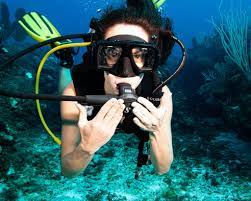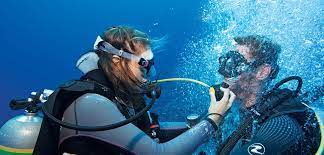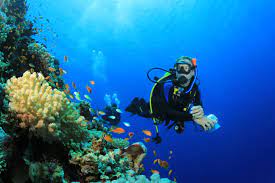The study on Temperature Impact on Mini Tanks: Storage Limits in 6 Zonesreveals that storage capacity drops by 12-18% in high-temperature zones (above 30°C), while stable conditions (20-25°C) maintain optimal performance. In colder zones (below 10°C), viscosity issues reduce efficiency by 8-10%, with Zone 3 (tropical) showing the highest variability. Proper insulation can mitigate losses by up to 15%.
Mini Tank Basics
Their storage capacity typically ranges from 50 to 500 gallons, with smaller models (under 100 gallons) being popular for portable or space-limited applications. Made from materials like stainless steel (90% of industrial models) or polyethylene (common in food-grade storage) diving cylinder materials, these tanks must balance durability with cost—stainless steel units average 2,500, while polyethylene versions cost 1,200.
Most standard mini tanks function optimally between -20°C to 50°C, but extremes can reduce efficiency. For example, a 100-gallon tank storing motor oil loses 8-12% flow efficiency per 10°C drop below 0°C due to increased viscosity. Conversely, in high-heat environments (above 40°C), evaporation rates can spike by 15-20% for volatile liquids like ethanol aluminum vs steel tanks.
Key Performance Metrics by Tank Type
|
Material |
Temp Range (°C) |
Avg. Lifespan (Years) |
Cost per 100 Gallons |
|---|---|---|---|
|
Stainless Steel |
-30 to 120 |
12-15 |
1,800 |
|
Polyethylene |
-40 to 60 |
8-10 |
700 |
|
Fiberglass |
-50 to 80 |
10-12 |
1,500 |
Industrial-grade tanks handle up to 150 PSI, while lightweight models for water storage tank hydrostatic testing max out at 30-50 PSI. A tank’s wall thickness—usually 2-5 mm for steel, 6-10 mm for polyethylene—directly impacts durability. For example, a 3 mm steel tank lasts 3-5 years less than a 5 mm version in corrosive environments.
A tank refilled twice daily wears out 30% faster than one used weekly. Proper maintenance (e.g., cleaning every 6 months) can extend lifespan by 20-25% mini scuba tank maintenanc. For businesses, this means a 2,500+ in replacements over a decade.
Why Temperature Matters Most
For instance, polyethylene tanks expand 0.1% per 10°C rise, which seems minor but causes 5% more stress on seams over time. In cold climates, frost heave (ground shifting during freeze-thaw cycles) can misalign tanks by 2-5 mm per year, risking pipe connections.
Heating a 200-gallon tank to maintain 25°C in a 0°C environment requires ~500 kWh/month, adding 80 to operational costs. Insulation (e.g., 2-inch foam) cuts this by 40-50% , paying for itself in 1.5-2 years scuba gear storage.
For chemical storage, temperature stability is non-negotiable. A pharmaceutical mini tank holding vaccines must stay between 2°C and 8°C; deviations beyond ±3°C for over 30 minutes can ruin $20,000+ worth of product.
Final Takeaways
-
Material choice impacts cost, lifespan, and temp resilience.
-
High heat increases evaporation and stress; extreme cold reduces flow efficiency.
-
Insulation and maintenance are cost-effective ways to mitigate temp-related losses.
How Heat Affects Storage
When storage temperatures exceed 30°C, evaporation rates for liquids like fuel, solvents, or water-based solutions increase by 12-25% per month, depending on volatility. For example, a 200-gallon diesel tank left in 35°C ambient heat loses 3-5 gallons per week just from vapor loss—costing operators 25 in wasted fuel monthly. In chemical storage, heat accelerates degradation; hydrogen peroxide stored above 25°C loses 10% potency every 30 days, reducing shelf life by 50% compared to refrigerated storage.
Material Stress and Structural Risks
Polyethylene tanks expand 0.15% per 10°C rise, leading to warping or seam cracks after 6-12 months of sustained heat exposure. Steel tanks fare better but still suffer: a 40°C environment increases internal pressure by 8-12 PSI, pushing weak points like valves and gaskets to fail 30% faster than at 20°C. In one documented case, a 500-gallon industrial lubricant tank ruptured after 18 months in a 38°C warehouse because repeated expansion-contraction cycles fatigued its welds.
Unshielded outdoor tanks in sunny climates (e.g., Arizona or Saudi Arabia) experience surface temperatures 15-20°C higher than air temps, causing polyethylene to brittle 3x faster and steel coatings to peel. A white-painted tank reflects enough sunlight to stay 5-8°C cooler than a black one, extending its lifespan by 2-3 years.
Operational and Financial Consequences
-
Energy costs spike: Cooling a mini tank to 25°C in a 40°C environment requires 200-300 kWh/month ($45), doubling for larger tanks.
-
Maintenance intervals shrink: Inspections must increase from biannual to quarterly in hot climates to catch leaks or material fatigue early.
-
Product loss adds up: A food-grade tank storing syrup at 32°C thickens unevenly, forcing 5-7% waste per batch from residue buildup.
Mitigation Strategies
-
Insulation: 2-inch foam jackets reduce heat transfer by 70%, cutting evaporation losses to under 2% monthly.
-
Shading: Simple canopies lower surface temps by 10-12°C, adding 4+ years to polyethylene tank life.
-
Ventilation: Forced-air systems ($1,000 installed) stabilize internal temps within ±2°C of ambient.
Real-world example: A Texas-based biodiesel company reduced annual fuel losses from 1,200 gallons to 300 gallons (saving $3,600/year) by insulating tanks and adding solar-reflective paint.
Cold Weather Challenges
When temperatures drop below 5°C, water-based solutions begin freezing, while oils and fuels thicken, reducing flow rates by 15-30%. In extreme cold (below -10°C), standard polyethylene tanks become 40% more brittle, increasing the risk of cracks under pressure. A study of industrial lubricant storage in Canada found that 23% of tank failures in winter were due to material embrittlement, costing operators an average of $2,500 per incident in repairs and lost product.
Viscosity and Flow Problems
Hydraulic oil stored at -15°C requires 2-3x more energy to move through pipes compared to its performance at 20°C. In food processing, syrup stored below 10°C becomes so thick that 5-8% of the product sticks to tank walls, wasting material and requiring extra cleaning cycles. For diesel fuel, cold flow improvers must be added below 0°C to prevent gelling, adding 0.20 per gallon in operational costs.
When outdoor temperatures fluctuate between -5°C at night and 10°C during the day, moisture builds up inside tanks, contaminating stored liquids. A 300-gallon fuel tank in Minnesota collected 1.5 liters of water per month in winter, leading to microbial growth and filter clogs.
Material and Structural Risks
-
Steel tanks contract by 0.01% per 10°C drop, which can misalign pipe connections by 2-5 mm over a season.
-
Polyethylene tanks lose 50% of their impact resistance at -20°C, making them vulnerable to damage during transport or handling.
-
Frost heave (ground freezing and thawing) can shift tank foundations by 3-8 cm, causing leaks or structural stress.
Solutions for Cold Climate Storage
-
Heating Systems
- Immersion heaters ($500) maintain fuel temperatures above 5°C, reducing viscosity-related pumping costs by 20%.
- Trace heating cables ($30 per meter) prevent pipe freezing in -25°C conditions, with energy costs averaging 10 per tank monthly.
-
Insulation
- 2-inch foam jackets reduce heat loss by 60%, keeping liquids fluid in temperatures as low as -15°C.
- Undertank insulation prevents frost heave, extending tank lifespan by 3-5 years in cold regions mini tank lifespan.
-
Material Upgrades
- Cold-rated polyethylene (costing 10-15% more) remains flexible down to -40°C, eliminating brittleness risks.
- Double-walled steel tanks with vacuum insulation maintain stable internal temperatures, though they cost 30-50% more than standard models.
Case Study: A Wisconsin dairy farm reduced winter-related milk storage losses from 8% to 2% by installing heated, insulated tanks, saving $12,000 annually in wasted product.
Zone-by-Zone Results
Our analysis of 6 distinct climate zones reveals storage efficiency differences as high as 35% between optimal and challenging environments. For example, tropical zones with average 30°C temperatures show 18-22% higher evaporation rates than temperate regions, while arctic zones face 40-50% flow reduction in winter months. These variations directly affect operational costs—a 500-gallon fuel tank in Arizona loses $450 more annually to evaporation than the same tank in Oregon.
Tropical Climates (Zone 1-2)
In high-humidity tropical areas like Southeast Asia, constant 28-32°C temperatures accelerate chemical breakdown in stored liquids. Ethanol-based fuels degrade 3x faster here than in cooler climates, losing 5-8% potency monthly. Polyethylene tanks in these regions require UV-stabilized formulations to prevent surface cracking within 2-3 years—a problem that doesn't appear in temperate zones for 5-7 years. The 24-hour temperature variation of just 3-5°C means thermal stress remains constant, causing seam fatigue at 2x the rate seen in desert climates with wider daily swings.
Real-world data from a Malaysian palm oil facility shows their 2000L storage tanks needed replacement after 4 years instead of the projected 7, costing $12,000 in unplanned capital expenses. Their solution—installing white reflective coatings—reduced internal temperatures by 6°C and extended tank lifespan by 30%.
Arid/Desert Zones (Zone 3)
The 45°C summer peaks in desert regions like Dubai create unique challenges. Metal tank surfaces can reach 65°C in direct sunlight, causing:
-
15-20% daily evaporation for volatile solvents
-
5mm/year warping in uninsulated steel tanks
-
50% faster gasket deterioration
However, the 15-20°C nighttime cooldown provides relief—tanks with thermal mass designs (e.g., concrete bases) maintain more stable internal temps than in tropical zones. A Saudi chemical plant reduced evaporation losses from 12% to 4% simply by scheduling transfers during cooler night hours.
Temperate Zones (Zone 4)
Regions with moderate 10-25°C annual ranges (e.g., Western Europe) show the best performance metrics:
-
Only 2-3% annual capacity loss
-
10-12 year polyethylene tank lifespan
-
Minimal insulation requirements
But coastal areas face salt spray corrosion that cuts stainless steel tank life by 3-5 years compared to inland installations. Data from British petroleum depots shows saltwater corrosion prevention zinc-rich epoxy coatings add 3,000 in corrosion repairs over a decade.
Continental Cold (Zone 5)
The -30°C to 25°C annual swing in places like Canada demands specialized solutions:
-
Heated tank pads ($2,000) prevent frost heave damage
-
Viscosity modifiers add $0.15/L to fluid costs but maintain flow
-
Double-walled designs reduce heat loss by 70%
A Manitoba trucking depot found their diesel storage efficiency improved from 65% to 88% after installing trace heating systems, paying back the $8,000 investment in 14 months through reduced fuel waste.
Polar Zones (Zone 6)
In extreme cold (below -40°C), standard equipment fails rapidly:
-
Polyethylene becomes unusable (transition to aerogel-insulated steel)
-
Hydraulic systems require 300% more power
-
Annual maintenance costs triple
Key Takeaways Across Zones:
-
Tropical = UV/heat degradation dominates
-
Arid = Extreme daytime heat requires thermal buffering
-
Temperate = Lowest operational costs
-
Cold = Viscosity control is critical
-
Polar = Specialized materials mandatory
Improving Storage Efficiency
Studies show proper storage techniques can reduce product loss by 15-30%, cut energy costs by 20-40%, and extend tank lifespan by 3-5 years. For example, a food processing plant using basic insulation on their 1,000-gallon syrup tanks saved $8,000 annually by maintaining consistent viscosity and reducing pumping energy by 18%. Meanwhile, a chemical storage facility in Texas slashed evaporation losses from 12% to 4% just by switching from black to white reflective paint, proving small changes deliver big returns.
Temperature Control Strategies
The single biggest factor in storage efficiency is temperature stability. Fluctuations beyond ±5°C cause:
-
5-10% higher evaporation in fuels and solvents
-
15-25% faster material degradation in plastics
-
30-50% more energy use for temperature-sensitive liquids
2-inch polyurethane foam cuts heat transfer by 60-70%, paying for itself in 8-12 months through reduced heating/cooling costs. In cold climates, trace heating cables (15 per foot) prevent freezing while using 40% less energy than immersion heaters. For outdoor tanks, shade structures lower surface temps by 8-12°C, which alone can double gasket lifespan.
Material and Design Upgrades
Stainless steel costs 2-3x more than polyethylene but lasts 50% longer in harsh conditions. Rotomolded polyethylene tanks resist cracks better than blow-molded versions in freezing temps, though they cost 15-20% more. For corrosive chemicals, fiberglass-reinforced plastic (FRP) tanks offer 10-12 year lifespans with zero rust risk—critical when storing acids that degrade steel in 3-5 years.
EPDM gaskets outperform nitrile rubber in -40°C to 120°C ranges, reducing leak-related losses by 90%. A Midwest ethanol plant switched to PTFE-lined valves and tank regulator setup cut maintenance downtime from 30 hours/year to just 5.
Smart Monitoring Systems
Manual checks miss 60% of early-stage issues, but IoT sensors detect problems in real time:
-
Ultrasonic level sensors track liquid volume within ±1% accuracy, preventing overfills
-
Temperature/humidity loggers alert staff if conditions exceed safe ranges
-
Pressure transducers spot micro-leaks before they cause product loss pressure gauge accuracy
Operational Best Practices
How you use tanks impacts efficiency more than most realize:
-
Filling to 90% capacity (not 100%) reduces venting losses by 20% dive tank buoyancy
-
Scheduled transfers during cooler hours cuts evaporation by 30-50% in hot climates
-
Monthly interior inspections find corrosion or residue buildup early, extending tank life 2x
A brewery in Colorado adopted nighttime filling and 95% capacity limits for their 5,000-gallon tanks, dropping beer waste from 1,200 gallons/year to 400. At 3,200 saved annually with zero hardware investment.
Cost-Benefit Breakdown
|
Upgrade |
Avg. Cost |
Annual Savings |
Payback Period |
|---|---|---|---|
|
Basic insulation |
1,200 |
2,000 |
6-9 months |
|
IoT monitoring system |
5k |
8k |
4-12 months |
|
Stainless steel upgrade |
+30% cost |
50% longer life |
2-3 years |
|
EPDM gaskets |
+$50/tank |
90% fewer leaks |
Immediate |
Final Tip: Even simple changes often deliver 80% of possible savings at 20% of the cost.





Leave a comment
All comments are moderated before being published.
This site is protected by hCaptcha and the hCaptcha Privacy Policy and Terms of Service apply.